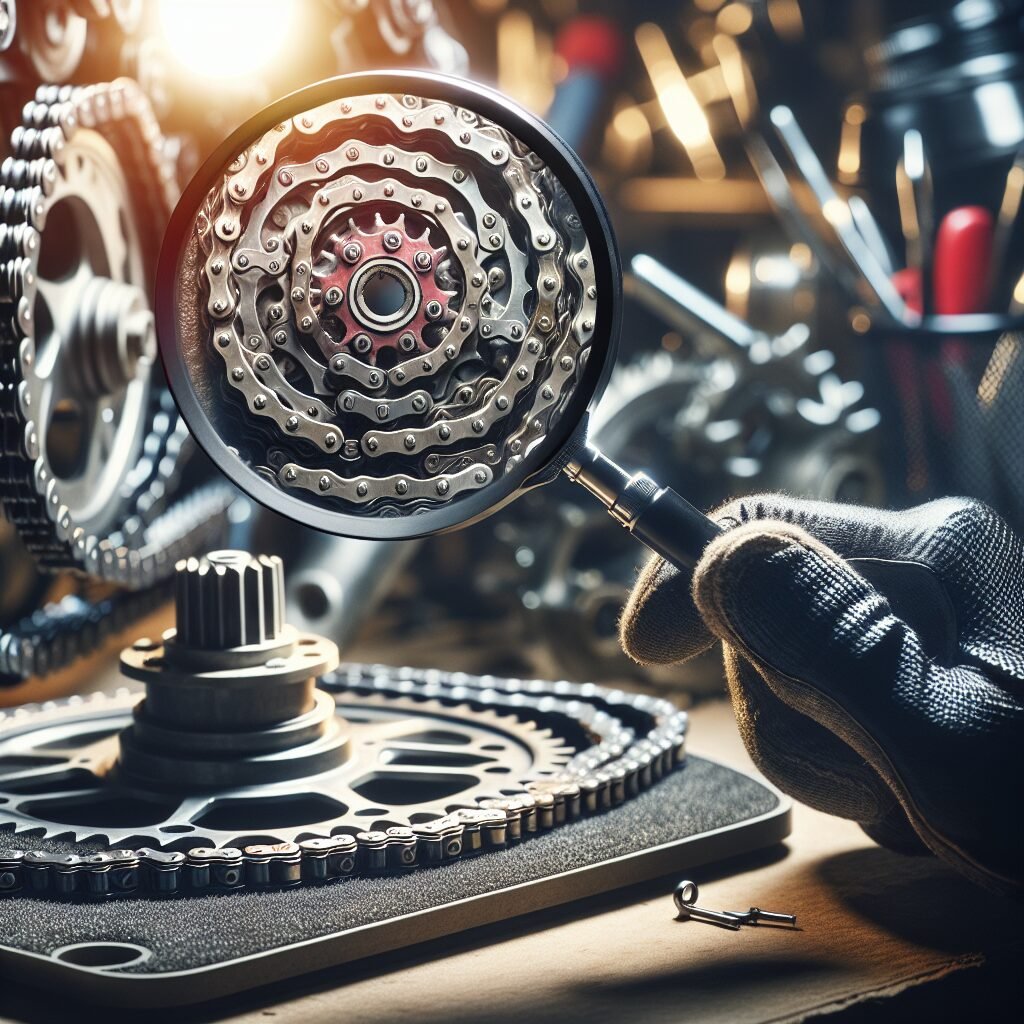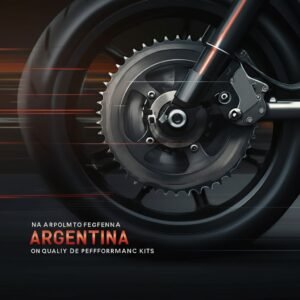Motorcycle chains and sprockets are fundamental components that directly influence the performance, efficiency, and safety of your bike. Understanding the technical aspects of these parts is crucial for making informed decisions about maintenance and upgrades. In this blog, we dive into the technicalities of motorcycle chains and sprockets, exploring their importance, determining factors for sprocket teeth, disadvantages, and more.
Which Factor Determines the Number of Teeth in a Sprocket?
The number of teeth in a sprocket is a critical factor that affects your motorcycle’s performance. Here are the key factors that determine the number of teeth in a sprocket:
- Gear Ratio: The gear ratio is a primary determinant. A higher number of teeth on the rear sprocket relative to the front sprocket provides more torque and acceleration, while a lower number results in higher top speeds.
- Engine Power: The power output of the engine influences the ideal sprocket size. High-power engines can benefit from sprockets with more teeth to harness better torque.
- Riding Style: Different riding styles, such as racing, touring, or off-roading, require different sprocket configurations to optimize performance.
- Manufacturer Specifications: OEM specifications are designed to balance power, speed, and efficiency for general use. Deviating from these specs should be done with a clear understanding of the consequences.
What Are the Disadvantages of Chains and Sprockets?
While chains and sprockets are widely used in motorcycles, they come with their own set of disadvantages:
- Maintenance: Chains require regular cleaning, lubrication, and tension adjustments to maintain optimal performance.
- Wear and Tear: Both chains and sprockets are subject to wear and tear, which necessitates periodic replacements.
- Noise: Chains can produce more noise compared to belt or shaft drives, which might be a concern for some riders.
- Efficiency Loss: Chains can lose efficiency due to friction and stretching over time, impacting the overall performance of the motorcycle.
- Exposure to Elements: Chains are exposed to dirt, debris, and weather conditions, which can accelerate wear and corrosion.
Do We Really Need 12 Sprockets on a Racing Bike?

Racing bikes often come with multiple sprockets to provide a wide range of gear ratios. But do we really need as many as 12 sprockets?
- Gear Range: More sprockets offer a broader range of gear ratios, enabling precise control over speed and torque.
- Performance Optimization: For racing, where every millisecond counts, having multiple sprockets allows for optimal performance across various track conditions.
- Customization: Racers can customize their gear setups to suit specific tracks, weather conditions, and personal preferences.
- Complexity: While more sprockets provide benefits, they also add complexity to the drivetrain, making maintenance and adjustments more challenging.
Can You Change the Size of a Bike Chain?
Changing the size of a bike chain is possible and sometimes necessary, especially when you change the sprockets or the setup of your drivetrain. Here’s how you can do it:
- Measure the Current Chain: Determine the length of the current chain by counting the number of links.
- Determine the New Chain Size: Based on the new sprocket sizes, calculate the required chain length using a chain length calculator or formula.
- Adjust the Chain: Use a chain breaker tool to remove excess links or add links if needed. Ensure that the chain length allows for proper tension and alignment.
- Test the Fit: Install the new chain and test the fit by rotating the pedals or running the engine to ensure smooth operation without tight spots or excessive slack.
Conclusion: Technical Considerations and Advice
Understanding the technical aspects of motorcycle chains and sprockets is essential for maintaining optimal performance and safety. Here are some key takeaways:
- Follow OEM Specifications: Always use the manufacturer’s specifications as a baseline for sprocket and chain sizes.
- Regular Maintenance: Regular cleaning, lubrication, and inspection of chains and sprockets can significantly extend their lifespan.
- Consider Riding Style: Choose sprocket sizes that align with your riding style and performance goals.
- Consult Professionals: When in doubt, consult a professional mechanic to ensure your motorcycle’s drivetrain is in optimal condition.
By keeping these technical considerations in mind, you can ensure that your motorcycle’s chains and sprockets perform at their best, providing a smooth and reliable riding experience.



